Seven Questions Over Breakfast with Stephen Alcorn
 January 14th, 2010 by jules
January 14th, 2010 by jules
 It’s a pleasure to have illustrator Stephen Alcorn visiting today: I’ve wanted to highlight his work since I first saw Lee Bennett Hopkin’s America At War in 2008. Stephen is most likely known for his striking relief-block prints, which he manages to infuse with metaphor and great emotion.
It’s a pleasure to have illustrator Stephen Alcorn visiting today: I’ve wanted to highlight his work since I first saw Lee Bennett Hopkin’s America At War in 2008. Stephen is most likely known for his striking relief-block prints, which he manages to infuse with metaphor and great emotion.
But Alcorn also works in watercolors, oils, and mixed-media. And, no matter his medium, you can bet you’ll see his imaginatively-rendered illustrations in books beautifully-designed. Always beautifully-designed.
Take last year’s A Gift of Days: The Greatest Words to Live By (Atheneum), a book of days with an accompanying portrait of a legendary figure, along with a quote from the famous person. Wrote Kirkus, “Alcorn lays this out on each double-page spread with a stunning polychrome-relief block-print bordered with pattern on one leaf and, facing, a week of birthdays and quotes. These images are often brilliantly inventive: Billie Holiday’s camellia has a death’s head in its center; John Lennon {pictured below} is figured as the King of Hearts with a Mozart overlay; Leonardo da Vinci is posed like the Mona Lisa.”
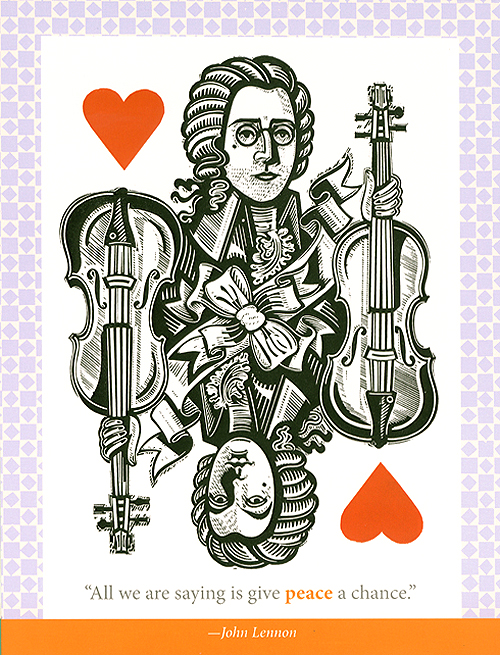
conceived and illustrated by Alcorn
Once upon a time, John A. Glusman (Farrar, Straus & Giroux) nailed the particular beauty of Stephen’s work so perfectly that I’ll defer to him here for a moment:
…{M}ore than the technique is the imagination and visual acuity Alcorn brings to his subjects: playing with perspectives, jostling with angles, combining foreshortened, exterior scenes with larger, emotional interiors, setting our expectations on head so we look, and look again, and marvel. This is multi-dimensional work in the true sense of the term: layered, split-imaged, resonating with multiple–sometimes complementary, sometimes contradictory–meanings, brilliantly executed, unfailingly interesting.
Alcorn, who was born here in the States and is also a musician, spent his formative years in Italy, having studied—as you’ll see below—at the Istituto Statale d’Arte in Florence. His work—as well as his wife, Sabina’s—is featured at The Alcorn Studio & Gallery. He is the son of graphic artist, designer, and illustrator John Alcorn, and he’s here this morning to share lots of art and tell us a bit more about his work — and which new title he’s particularly excited about this year.
Stephen’s breakfast-of-choice this morning is “cappuccino with a pinch of nutmeg, accompanied by a ‘cornetto con la marmellata.'” Cappuccino. Oh, twist twist my arm. Let’s set the table for our breakfast chat and get the basics from Stephen in the process. I thank him for stopping by.
 7-Imp: Are you an illustrator or author/illustrator?
7-Imp: Are you an illustrator or author/illustrator?
Stephen: Illustrator and author.
7-Imp: Can you list your books-to-date?
Stephen: The most prominent book in my mind at this point in time is the recently published A Gift of Days: The Greatest Words to Live By (Atheneum; September 15, 2009). A compilation of 366 enlightening quotes from personaggi spanning all walks of life, it features fifty-two relief-block portraits — an ambitious compendium of portraits showcasing virtually of all of the technical experimentation I have made in the realm of the relief-block print over the past thirty years. It is a book designed to be appreciated on a multitude of levels — and by young readers and adults alike. For this wonderful opportunity, I am indebted beyond me measure to editor extraordinaire, Emma Dryden, and to maverick creative director, Rubin Pfeffer.
{Pictured below are Alcorn’s portraits of Abraham Lincoln, Johnny Cash, Ralph Waldo Emerson, Ray Charles, and Michelangelo.}
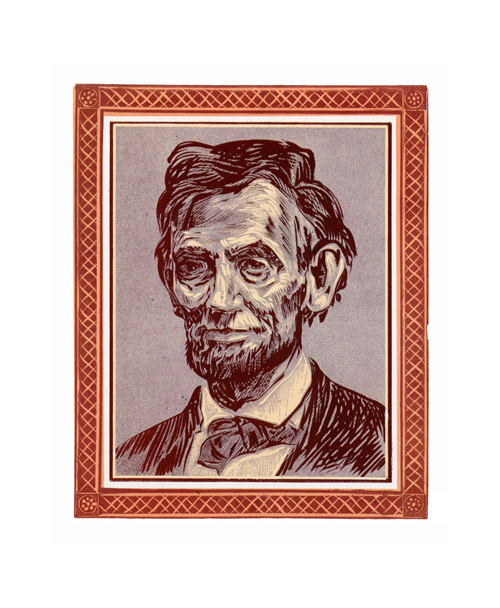
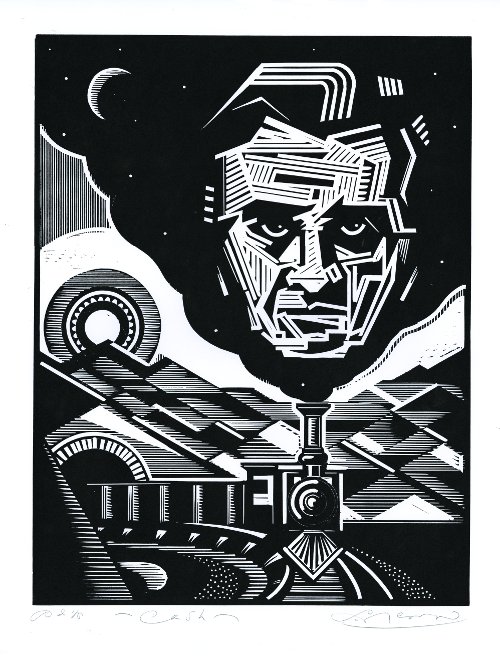
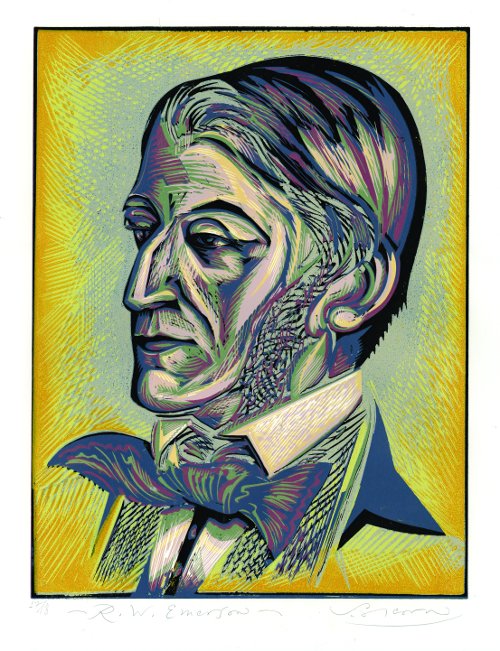


Two other recent books of which I am especially proud to have been a part of are: Yours For Justice, Ida B. Wells: The Daring Life of a Crusading Journalist; Philip Dray; Peachtree Publishing, Ltd.
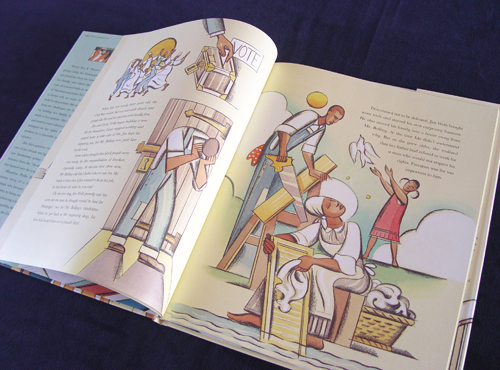

and…
Keep On!, a picture-book biography celebrating the life of Matthew Henson, African-American co-discoverer of the North Pole (Deborah Hopkinson; Peachtree; February, 2009).
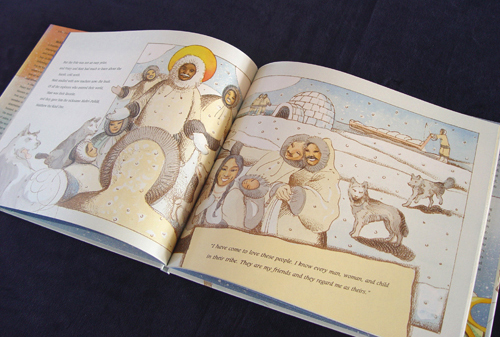
Another recently published title I had the honor to illustrate: America At War {pictured below}; Poems Selected by Lee Bennett Hopkins; McElderry Books.
(Note: This is my fifth collaboration with celebrated poet, tireless advocate for poetry in schools, and dear friend, Lee Bennett Hopkins.)
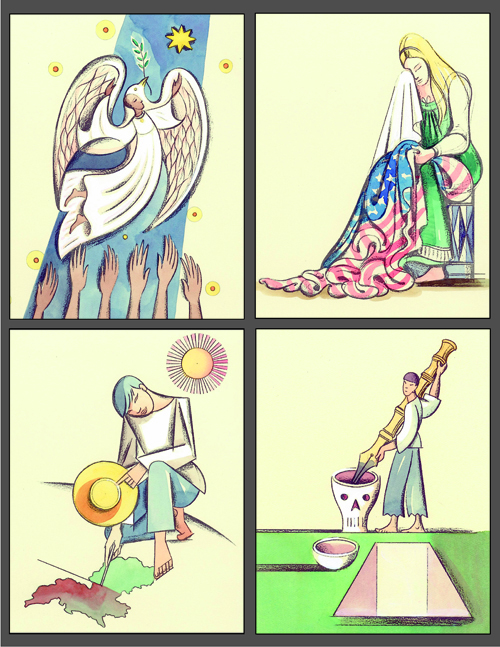
A sampling of the approximately fifty interior images created for America at War
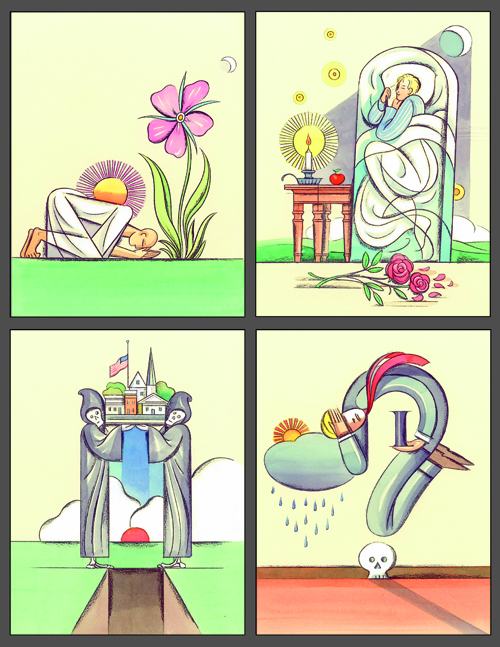
First image, top left: Illustration for Beverly McLoughland’s “The Whipporwill Calls”:
“And one night / The whipporwill calls / And the warm air / Carries the haunting sound / Across the fields / And into the small dark cabins. / And only the slaves know /
It is Harriet.”
First image, top right: Illustration for Stephen Crane’s “War is Kind”: “Do not weep, maiden, for war is kind. / Because your lover threw wild hands toward the sky / And the affrighted steed ran on alone, / Do not weep. / War is kind.”
First image, bottom left: Illustration for Bruce Balan’s “Not a War”:
“Korea, that is. / Not a war, officially. / Never declared. / Instead, / Only a police action. / Two and a half million soldiers / Dead. / Not a war…”
First image, bottom right: Illustration for Sara Holbrook’s “War is the Fiercest Art”: “War is the fiercest art. Trading / Pen for gun, evading / Death, armies invading…”
Bottom image, top left: Illustration for Denise Levertov’s “What Were They Like?”: “1) Did the people of Vietnam / use lanterns of stone? / 2) Did they hold ceremonies / to reverence the opening of buds?…”
Bottom image, top right: Illustration for Rebecca Kai Dotlich’s “Graveyard”: “It is settled then. / This is where you will sleep…”
Bottom image, bottom left: Illustration for Ben Myers’ “A Small Town Mourns Its First Casualty”: “No parade today. / Our small town sulks / in uneasy innocence…”
Bottom image, bottom right: Illustration for Dag Hammarskjöld’s Markings: “I ask: what am I doing here?…”
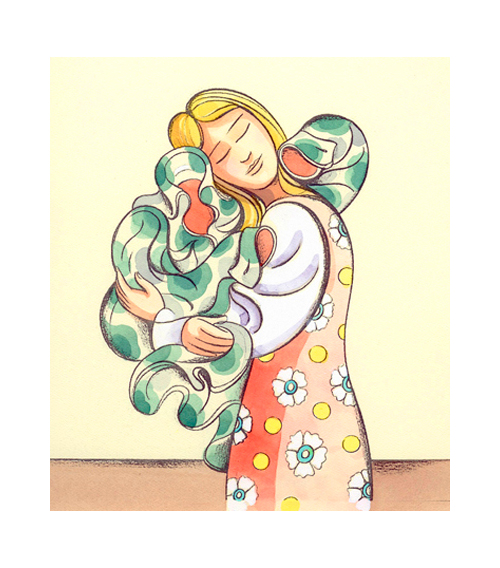
“…United States Army / sends something home; / gives part of you back…”

{Note: A comprehensive list of Stephen’s books are at the interview’s close.}
7-Imp: What is your usual medium, or––if you use a variety—your preferred one?
Stephen: I work in a variety of mediums. These include, but are not limited to, relief-block print, casein on paper, oil on canvas, and a wide assortment of mixed-media on paper combinations.
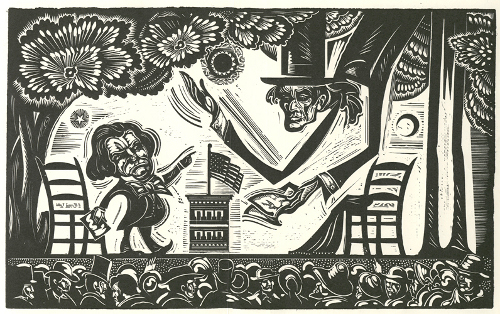
(Houghton Mifflin Harcourt, 1993)
(Click to enlarge spread.)
7-Imp: If you have illustrated for various age ranges (such as, both picture books and early reader books OR, say, picture books and chapter books), can you briefly discuss the differences, if any, in illustrating for one age group to another?
Stephen: My audience has come to span the proverbial ages (pun intended). While my early years were dedicated to the creation of imagery tailored to suit the needs of the adult market—more specifically the interpretation of literary classics (note: throughout the eighties I was responsible for the dust jackets of the fabled Modern Library series of literary classics)—the book-related projects I embrace today seem directed to an increasingly younger audience. Looking back, I can trace a discernable progression — from adult to young adult; from young adult to young reader, as it were. Perhaps as a result of their having been conceived essentially as books for “all ages,” the picture books I‘ve illustrated have, at times, proven difficult to categorize in strict, conventional terms.
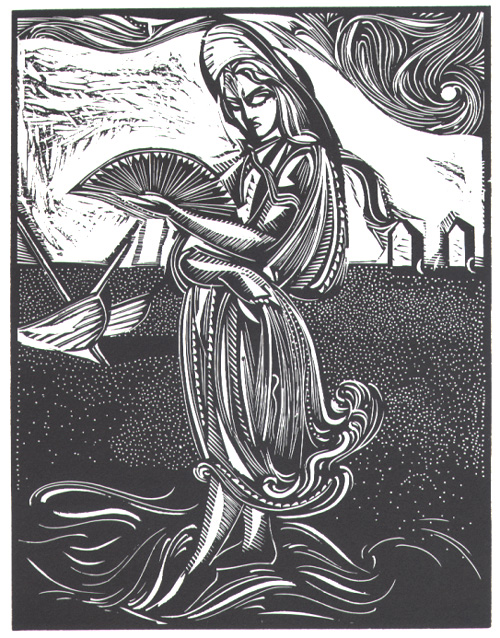
7-Imp: Where are your stompin’ grounds?
Stephen: For the past twenty-three years, I have lived and worked in Cambridge, New York, a 19th-century village surrounded by pastoral, rolling farmland in upstate New York, located roughly half-way between New York City and Canada and half-way between Saratoga Springs and Bennington, VT. The agrarian surroundings have proven a boundless source of inspiration. Prior to that, I lived in Florence, Italy — an ancient bustling city.
Amid the gentle, rolling hills and noble farmhouses of Washington County, I found myself drawn to Nature and to her greatest wonder, the Animal Kingdom. To my delight, I discovered that modern life does not diminish Nature’s charm. The timeless beauty of the Animal Kingdom—and our folklore and mythology about it—spoke vividly to my imagination. It was this return to Nature that inspired me to introduce color into my work as a printmaker… and the creation of my series of portraits of animals, titled Il Bestiario Straordinario, which in turn would become the book titled Hoofbeats, Claws, and Rippled Fins: Creature Poems (edited by Lee Bennett Hopkins; Harper Collins).
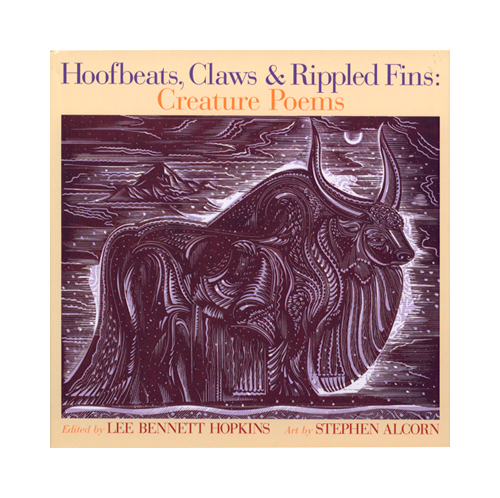
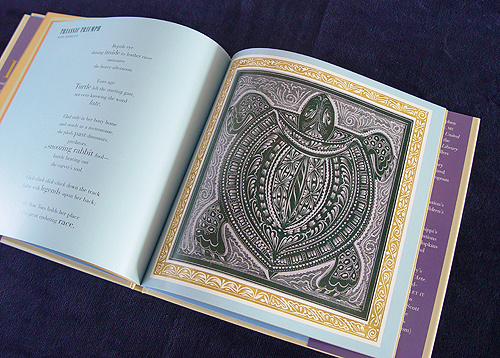
7-Imp: Can you briefly tell me about your road to publication?
Stephen: I had the good fortune to spend my formative years in Florence, Italy, where I attended the fabled Istituto Statale d’Arte, an experience that left an indelible impression upon me and infused my work with a passion for bold technical experimentation in a wide range of mediums. While still in my teens, my passion for portraiture and the illustrated word led me to embark on a career in the applied arts, with a particular emphasis on the Art of The Book.
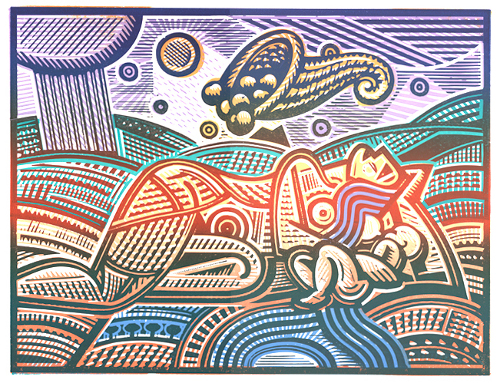
(Click to enlarge.)
7-Imp: Can you please point readers to your web site and/or blog?
Stephen: www.alcorngallery.com.
7-Imp: If you do school visits, tell me what they’re like.
Stephen: I try to keep the younger students engaged through an interactive approach that involves my drawing, in situ—a process youngsters find mesmerizing.
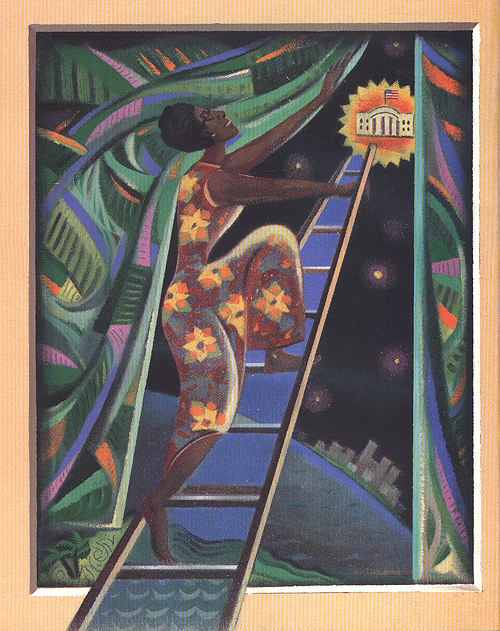
Let It Shine: Stories of Black Women Freedom Fighters (Harcourt, 2000)
7-Imp: If you teach illustration, can you tell me how that influences your work as an illustrator?
Stephen: I do enjoy teaching, particularly at the university level, i.e. the level at which I have had the most experience. Teaching has proven beneficial to me as an artist, as it forces me to articulate verbally with concision and clarity the creative processes I employ and develop intuitively in the privacy of my studio. I find that this verbal articulation fosters a greater clarity and economy of means in the formal, stylistic, and symbolic statements I seek to make as a craftsman, as a visual artist.
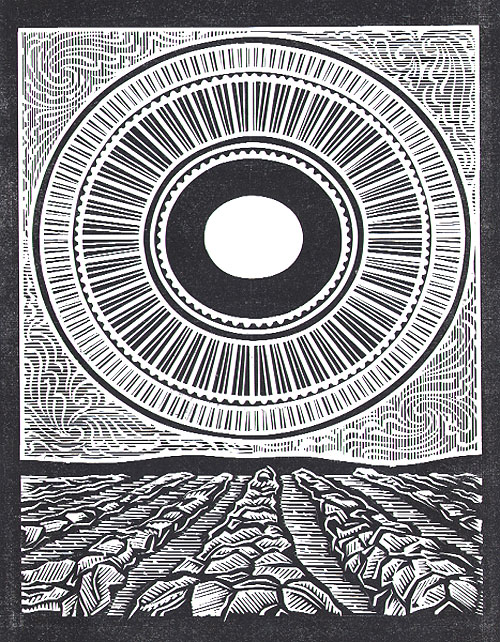
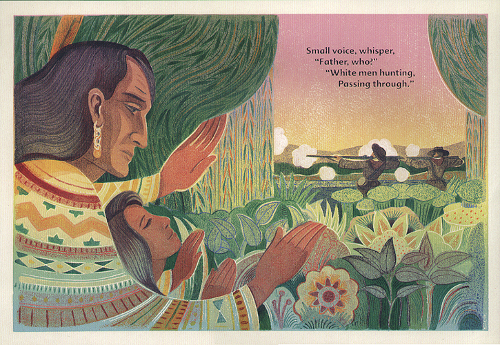
7-Imp: Any new titles/projects you might be working on now that you can tell me about?
Stephen: I recently completed a picture book tribute to one of my beloved heros, the late, great Odetta. It is titled Odetta: The Queen of Folk and is to be published by Scholastic in Fall of 2010. It is a project that is very dear to me, for it is not only the outgrowth of my personal friendship with Odetta, but is also an extension of my activities as a performing musician and sing/songwriter. Between my music-making and my activities as a visual artist, there exists a certain synergy — with one “feeding” the other in ways that are both inspiring and invigorating. For this interdisciplinary interaction I am most grateful.

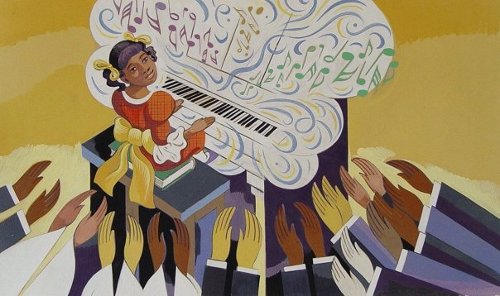
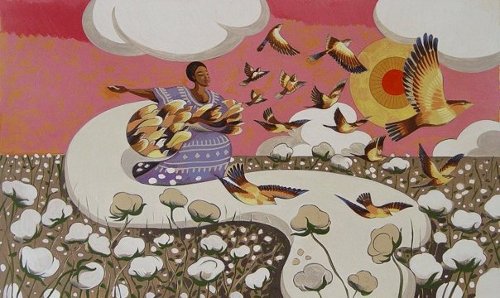
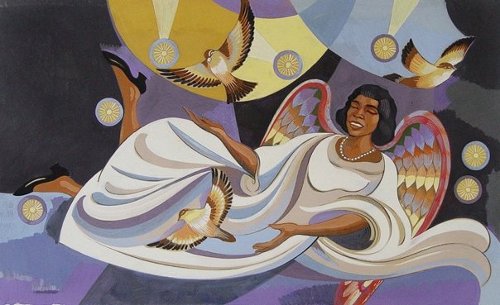
 Our table’s set now for seven questions over breakfast, and we’ve got our cappuccinos all set. Let’s get a bit more detailed, and I thank Stephen again for visiting.
Our table’s set now for seven questions over breakfast, and we’ve got our cappuccinos all set. Let’s get a bit more detailed, and I thank Stephen again for visiting.
1. 7-Imp: What exactly is your process when you are illustrating a book? You can start wherever you’d like when answering: getting initial ideas, starting to illustrate, or even what it’s like under deadline, etc. Do you outline a great deal of the book before you illustrate or just let your muse lead you on and see where you end up?
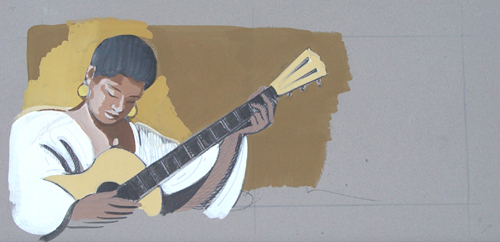

Stephen: I religiously collect and process my thoughts regarding a given prospective project over the course of long walks with my wife, Sabina — after which I put pencil to paper. These preliminary sketches in turn grow more defined. At a certain point, I place the spreads in their sequential order on the floor of my studio, like stepping stones. From this vantage point, I can scrutinize and study them in their larger context. I then return to the drawing board and pursue ever greater refinement. The same applies to all my imagery — regardless of the medium I employ. I like to think of the process as “evolution by design.” Despite the discipline I seek to impose on myself in the name of productivity and efficiency, the process remains organic and highly fluid. The key is to be receptive to the possibilities inherent in even the most preliminary of compositions, for these first marks are the seeds from which the finishes will stem — and ultimately blossom. An artist’s studio is in fact in many ways… a garden. To make things grow takes time, dedication, and patience—and an ability to commune with and derive inspiration from one’s world, one’s surroundings.
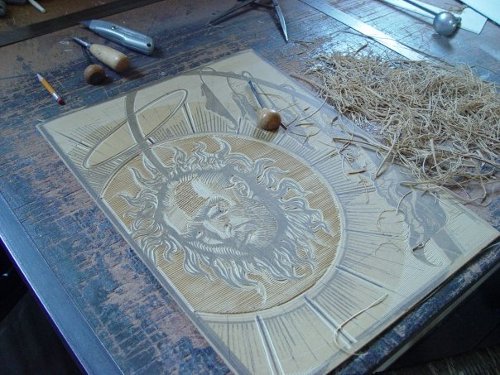
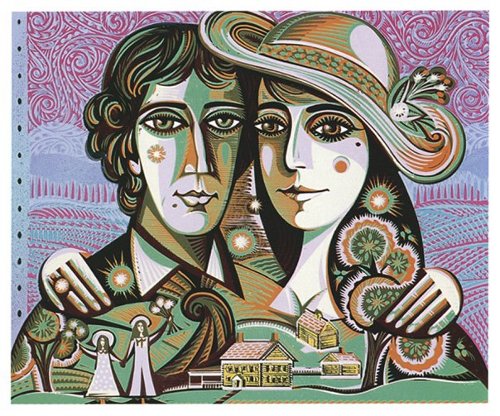
2. 7-Imp: Describe your studio or usual work space.
Stephen: I work in a picturesque 19th-century carriage house. The upstairs—a converted hay loft—is luminous, spacious, and serene; this is where I conceive my imagery, design my books, and do all my painting and illustrating. The downstairs, or ground floor, is divided into two sections. To the left lies my print shop (affectionately referred to as “the dungeon”). This is where I perform all of my (labor-intensive) printmaking activities — the engraving, the inking, the proofing, the printing etc. The other half of the ground floor functions as a showroom and veritable archival station for my work.
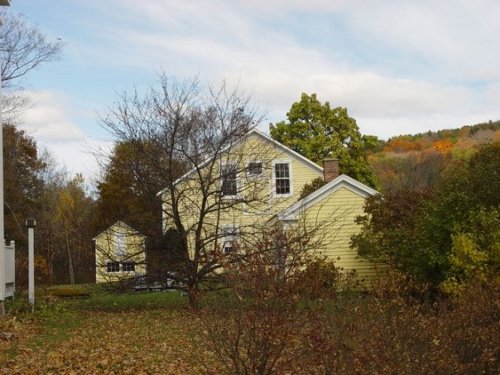
3. 7-Imp: As a book lover, it interests me: What books or authors and/or illustrators influenced you as an early reader?
Stephen: I came of age under the magically lyrical and sensuous spell of my father, John Alcorn (1935~1992), Milton Glaser, and Seymour Chwast. Their influence—and the legendary Pushpin Studios they gave rise to—has been immeasurable.
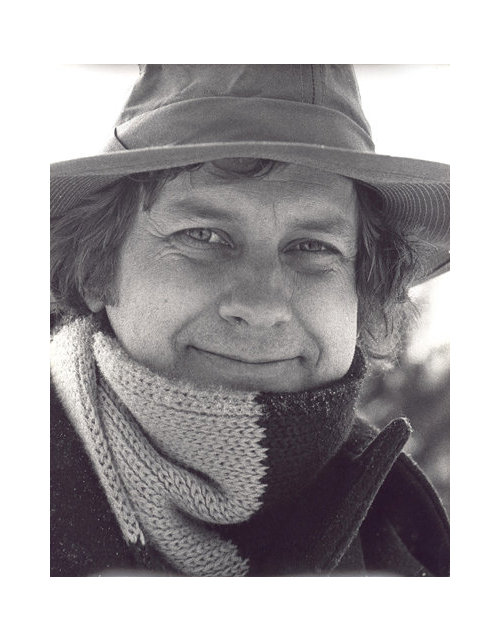


4. 7-Imp: If you could have three (living) illustrators—whom you have not yet met—over for coffee or a glass of rich, red wine, whom would you choose?
Stephen: Having already had the privilege at an early age to commune with the likes of Milton Glaser, Seymour Chwast, and Edward Sorel, etc., the luminaries I dream of meeting are not my peers. Rather they belong to another world entirely—in fact they belong to the proverbial ages. And reigning supreme among them are the painter/printmakers Picasso, Goya, Rembrandt, and Käthe Kollwitz.
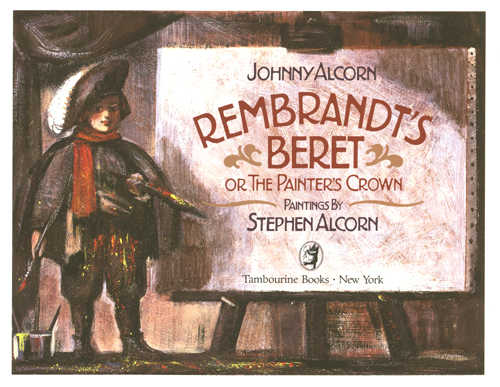

5. 7-Imp: What is currently in rotation on your iPod or loaded in your CD player? Do you listen to music while you create books?
Stephen: Music is an essential part of my working life. In rotation at the moment on my CD player are George Harrison’s All Things Must Pass, Jefferson Airplane’s Surrealistic Pillow, Odetta’s Blues Everywhere I Go, Creedence Clearwater Revival’s Chronicle (a compilation), and Bob Dylan’s John Wesley Harding.
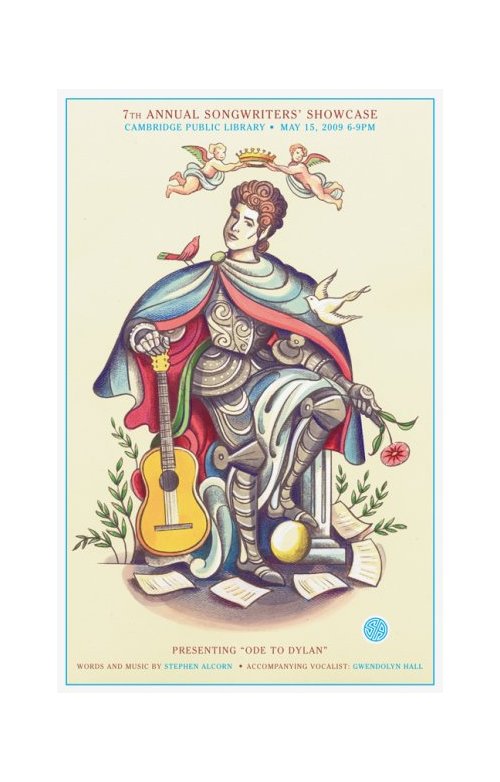

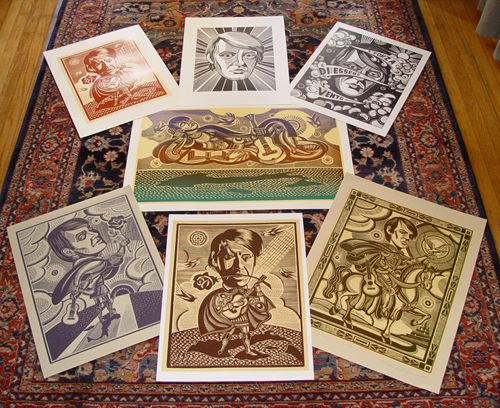

6. 7-Imp: What’s one thing that most people don’t know about you?
Stephen: That I am my own worst critic … and, as a result, I am rarely satisfied with my work. So often I wish I could start a given project over.
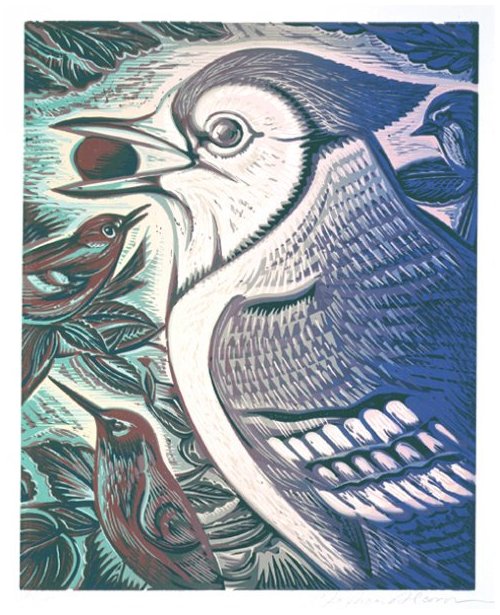
7. 7-Imp: Is there something you wish interviewers would ask you — but never do? Feel free to ask and respond here.
Stephen: What do you, as an artist, find most challenging and satisfying in the creative processes you employ?
The process of filtering, through the senses, all that is seemingly tired and conventional, i.e. the breathing of new life into the appearance of things, great and small. The translation, if you will, of the material and spiritual world into stylized and formally indelible shapes and signs that bespeak of enchantment, wonderment, and humanism in an increasingly material, and impersonal world.

7-Imp: What is your favorite word?
Stephen: “Beautiful.”
7-Imp: What is your least favorite word?
Stephen: “Tragic.”
7-Imp: What turns you on creatively, spiritually or emotionally?
Stephen: Many things. Among them the process of thinking metaphorically, or the ability to recognize/see edifying connections between seemingly disparate elements in the spiritual life, on the one hand, and in the material world, on the other.
7-Imp: What turns you off?
Stephen: A lack of imagination in others … and silence in the face of cruelty and injustice.
7-Imp: What is your favorite curse word? (optional)
Stephen: To curse is to briefly enter (and exit) a state of mind — a state in constant flux, however, and one so volatile that no one, single word could/should suffice. Ha!
7-Imp: What sound or noise do you love?
Stephen: The female harmonies that adorn recordings of my original songs.
7-Imp: What sound or noise do you hate?
Stephen: A door that is slammed.
7-Imp: What profession other than your own would you like to attempt?
Stephen: Singer/songwriter.
7-Imp: What profession would you not like to do?
Stephen: Accountant.
7-Imp: If Heaven exists, what would you like to hear God say when you arrive at the Pearly Gates?
Stephen: “Now go to sleep, my weary hobo.”
A GIFT OF DAYS: THE GREATEST WORDS TO LIVE BY. Illustrations © 2009 by Stephen Alcorn. Published by Atheneum, New York, NY. All rights reserved.
AMERICA AT WAR. Copyright © 2008 by Lee Bennett Hopkins. Illustrations © 2008 by Stephen Alcorn. Published by Margaret K. McElderry Books, New York, NY. All rights reserved.
Opening photo of Alcorn courtesy of Simon & Schuster.
All others images used with permission of Stephen Alcorn. All rights reserved.
The spiffy and slightly sinister gentleman introducing the Pivot Questionnaire is Alfred. He was created by Matt Phelan, and he made his 7-Imp premiere in mid-September. Matt told Alfred to just pack his bags and live at 7-Imp forever and always introduce Pivot. All that’s to say that Alfred is © 2009, Matt Phelan.
Stephen’s response to the books-to-date question:
- Il Naso by N. Gogol; original, hand-bound manuscript; 1975
- John Brown’s Body by Stephen Vincent Benet; The Franklin Mint
- The Owl by David Mamet and Lindsey Crouse; The Kipling Press
- Rembrandt’s Beret, or The Painter’s Crown by John H. Alcorn; Tambourine Books / William Morrow
- Feed the Birds by Helen and Dick Witty; Workman Publishing Company
- Abraham Lincoln: In His Own Words, edited by Milton Meltzer; Harcourt Brace & Co.
- The Harcourt, Brace & Company Anthology of Drama, edited by W.B.Worthen; Harcourt Brace & Co.
- Frederick Douglass: In His Own Words, edited by Milton Meltzer; Harcourt Brace & Co.
- Langston Hughes – An Illustrated Edition by Milton Meltzer; The Millbrook Press
- I, Too, Sing America: Three Centuries of African American Poetry; Houghton Mifflin Company
- The Artist of the Missing by Paul Lafarge; Farrar, Straus, Giroux
- My America; Lee Bennett Hopkins, anthologist; Simon & Schuster
- Let It Shine! by Andrea Davis Pinkney; Harcourt, Brace & Co.
- The Geography of Hope by Jim Haskins; The Millbrook Press
- Martyrs To Madness by Ted Gottfried; The Millbrook Press
- Nazi Germany: The Face of Tyranny by Ted Gottfried; The Millbrook Press
- Heroes of the Holocaust by Ted Gottfried; The Millbrook Press
- The Children of the Holocaust by Ted Gottfried; The Millbrook Press
- Displaced Persons by Ted Gottfried; The Millbrook Press
- Deniers of The Holocaust by Ted Gottfried; The Millbrook Press
- Broken Feather by Verla Kay; G.Putnam & Sons
- Hoofbeats, Claws, and Rippled Fins: Creature Poems; Edited by Lee Bennett Hopkins; Harper Collins
- A Poem of Her Own by Catherine Clinton, Anthologist; Abrams
- Home To Me; Lee Bennett Hopkins, Anthologist; Orchard
- The Book of Rock Stars by Kathleen Krull; Hyperion
- Days To Celebrate: An Almanac of People, Events, and Poetry; selected by Lee Bennett Hopkins; Greenwillow Books
- America At War; Poems Selected by Lee Bennett Hopkins; McElderry Books
- Yours For Justice, Ida B. Wells: The Daring Life of a Crusading Journalist by Philip Dray; Peachtree Publishing, Ltd.
- A Gift of Days; Atheneum; Fall 2009
- Keep On!; Peachtree; February, 2009
- The Spy Who Came In From The Cold by John le Carrrè; Oak Tree Press; London, England
- Odetta: The Queen of Folk; Scholastic, Fall, 2010
- Volumes forming La Collana d’Oro, a collection of children’s classics; designed and illustrated by Stephen Alcorn; Arnoldo Mondadori Editore; Verona, Italy: I Viaggi di Gulliver di Jonathan Swift; Il Piccolo Lord Fauntleroy di Frances Hodgson Burnett; Il Giro del Mondo in 80 Giorni di Jules Verne; Le Avventure di Tom Sawyer di Mark Twain; Cuore di Edmondo de Amicis; Pinocchio di Carlo Collodi; Il Richiamo della Foresta di Jack London; Oliver Twist di Charles Dickens; Piccole Donne di Luisa May Alcott; Alice di Lewis Carroll; Peter Pan di J. M. Barrie; L’Isola del Tesoro di Robert Lewis Stevenson

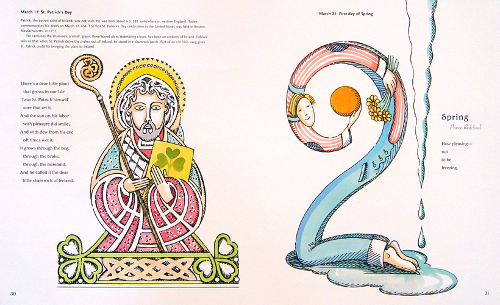
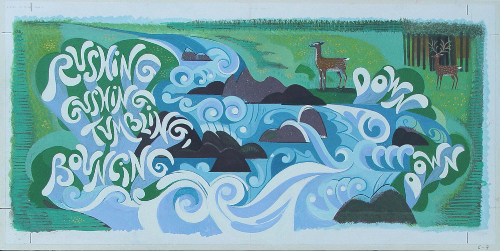

What a fantastic interview!! Lee speaks so
highly of Stephen and his work. I am honored to
have had Stephen bring so many of my words to
the page with his creative and beautiful (beautiful!) art. There is
such a surreal feel to his work.
What a gift he has.
And a lovely carriage house, too.)
“To make things grow takes time, dedication, and patience”
Amen to that, and thanks for sharing Stephen’s art. Gorgeous. I need to find “A Gift of Days” although it might suck days out of my life, just staring at those incredible portraits…
I love your blog! I’ve bookmarked it for future reading. Very unique design. Come visit mine when you get a chance if you’d like.
*Swoon*
So much awesomeness here. The Odetta book looks really good. Love his choice of music :), and of course, the Dylan poster.
Jules, I am going to have to get a second job just to pay for all the glorious books you have introduced me to! As a book collector, I now have a new obsession: to locate all of the Modern Library books with Stephen’s dust jackets. I’m also going to get his linocuts poster depicting so many of my favorite authors. I’m linking to it here: http://www.alcorngallery.com/Linocuts.html
Thanks for visiting, you all, and enjoying his talents with me.
Jill, what a great poster! I am partial to the Jeff Buckley print. Ah, sigh. Heaven rest Jeff Buckley’s talented soul.
Stephen is simply a master artist. Period.
What a wonderful lot of ground covered here. Great that Stephen had the opportunity to stretch out and answer questions at length. I also appreciate the generous showcase of artwork here. Bravo.
Wow. What else is there to say about this man’s work? Wow.
Each book Stephen and I have published together is a rare gem.
AMERICA AT WAR is over ten years old and still a strong selling title.
HIs work is superior. My career has been blessed with our collaboration. Onward Sir Stephen.
Stephen’s magnificent, luminous work shines through the darkness to reaffirm and inspire. Bravissimo!!
This was an excellent read, containing great care and insight into an artist’s work.
Caro Stephen,ho letto cose meravigliose,attraverso la traduzione di Google,che sai,non è precisa,anzi ti pregherei se puoi spedirmi tutto quello che ho visto,per archiviare questa biografia artistica.
di un grande… Stephen Alcorn.Ciao Vittorio
Wish I had been there. My first trip to the States will start from Stephen Alcorn!! As one performer to another::Bravo, bravissimo give us more and more.
[…] Stephen Alcorn (January 14, 2010): “Teaching has proven beneficial to me as an artist, as it forces me to articulate verbally […]
[…] is visiting 7-Imp once again today, in an in-his-own-words type of piece, to talk about his work and, specifically, the teaching […]